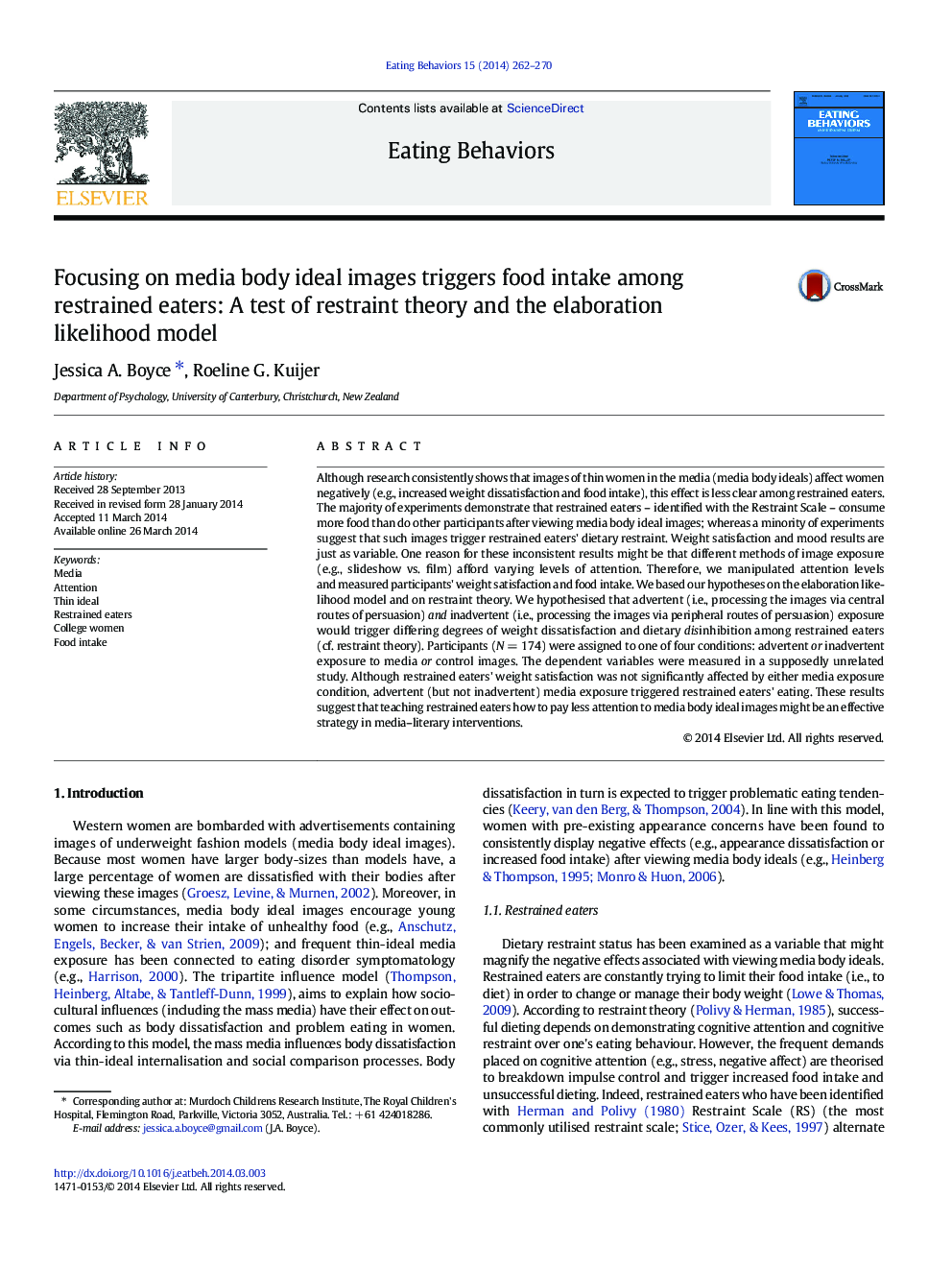| کد مقاله | کد نشریه | سال انتشار | مقاله انگلیسی | نسخه تمام متن |
|---|---|---|---|---|
| 906492 | 917007 | 2014 | 9 صفحه PDF | دانلود رایگان |
• We investigated restrained eaters' response to viewing media body ideal images.
• Hypotheses were based on restraint theory and the elaboration likelihood model.
• Participants' attention (advertent/inadvertent) toward the images was manipulated.
• Restrained eaters' weight satisfaction was not affected by the media images.
• Only advertent media exposure encouraged restrained eaters' food intake.
Although research consistently shows that images of thin women in the media (media body ideals) affect women negatively (e.g., increased weight dissatisfaction and food intake), this effect is less clear among restrained eaters. The majority of experiments demonstrate that restrained eaters – identified with the Restraint Scale – consume more food than do other participants after viewing media body ideal images; whereas a minority of experiments suggest that such images trigger restrained eaters' dietary restraint. Weight satisfaction and mood results are just as variable. One reason for these inconsistent results might be that different methods of image exposure (e.g., slideshow vs. film) afford varying levels of attention. Therefore, we manipulated attention levels and measured participants' weight satisfaction and food intake. We based our hypotheses on the elaboration likelihood model and on restraint theory. We hypothesised that advertent (i.e., processing the images via central routes of persuasion) and inadvertent (i.e., processing the images via peripheral routes of persuasion) exposure would trigger differing degrees of weight dissatisfaction and dietary disinhibition among restrained eaters (cf. restraint theory). Participants (N = 174) were assigned to one of four conditions: advertent or inadvertent exposure to media or control images. The dependent variables were measured in a supposedly unrelated study. Although restrained eaters' weight satisfaction was not significantly affected by either media exposure condition, advertent (but not inadvertent) media exposure triggered restrained eaters' eating. These results suggest that teaching restrained eaters how to pay less attention to media body ideal images might be an effective strategy in media–literary interventions.
Journal: Eating Behaviors - Volume 15, Issue 2, April 2014, Pages 262–270
